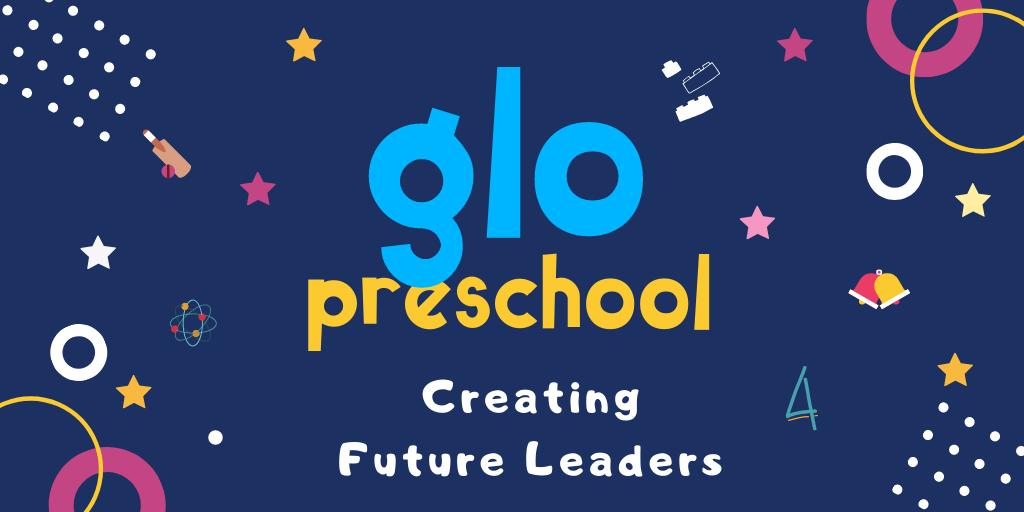
The schools were shut down in our state on 16th March, which threatened to throw our whole curriculum plan out of sync.
We decided to use the time productively and started with a training program for the teachers. Our teachers took up MOOCs on Edx and Coursera to groom their skills while they couldn’t spend time kids directly.
However, in a couple of days, we realised that we had to start classes back in some shape or form, which led us to start making video lessons for our class. Teachers created neat trackers to plan daily activities.
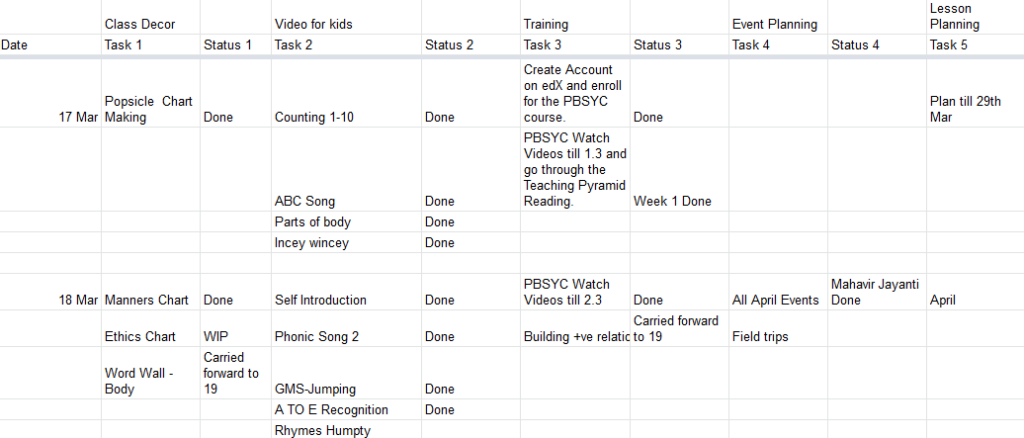
The trackers enabled accountability for teachers since they were working from home. It also allowed them to collaborate as they could see what tasks everybody else was working on. We used Google spreadsheets to maintain this tracker. One sheet was maintained by each teacher, but they had access to everyone else’s trackers as well. This has been a tremendous success and we plan to use it (to replace our physical lesson plans) even after the regular classes begin.
(To get a template of the tracker, write to us)
In the first week of creating video lessons, we asked parents (most of whom were also staying home due to the lockdown) to spend 30 minutes a day with their kids walking them through the video lessons.
Some kids really enjoyed these videos but nearly 30 percent were not interested in looking at these videos at all. Since we strive to make learning enjoyable, we knew that we had to do something else as well.
We started live classes over web conferences to engage kids meaningfully. When kids started seeing their familiar teachers everyday at a fixed time, they were more interested in looking at the videos.
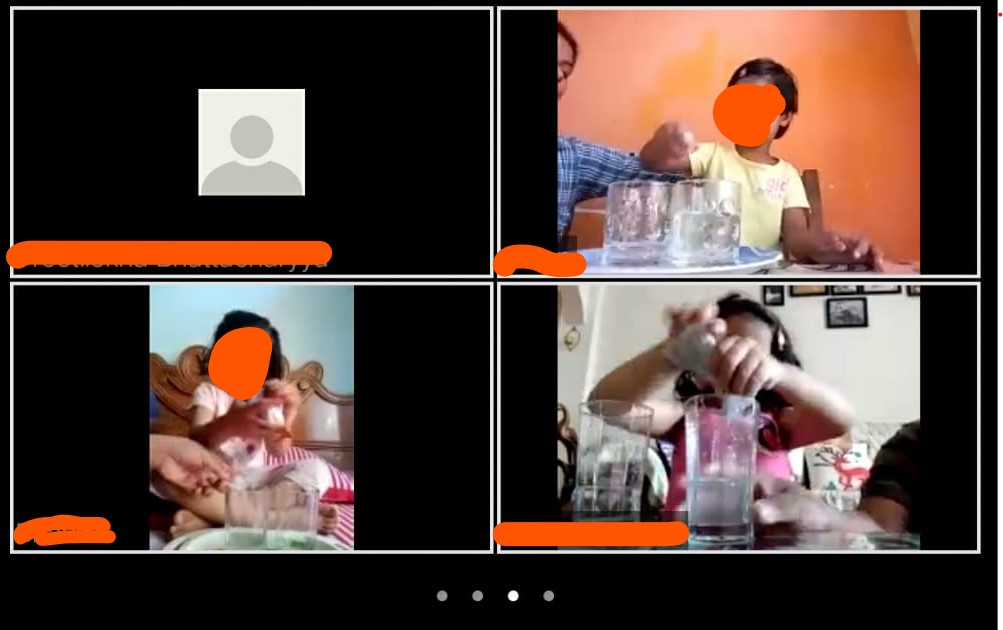
These live classes were a classic example of flipped classrooms, where the learning happens at home before the class begins, and the class time is used for problem solving and discussion. We were surprised by how well it worked.

An example of kids’ work on the video conference. Names hidden for privacy
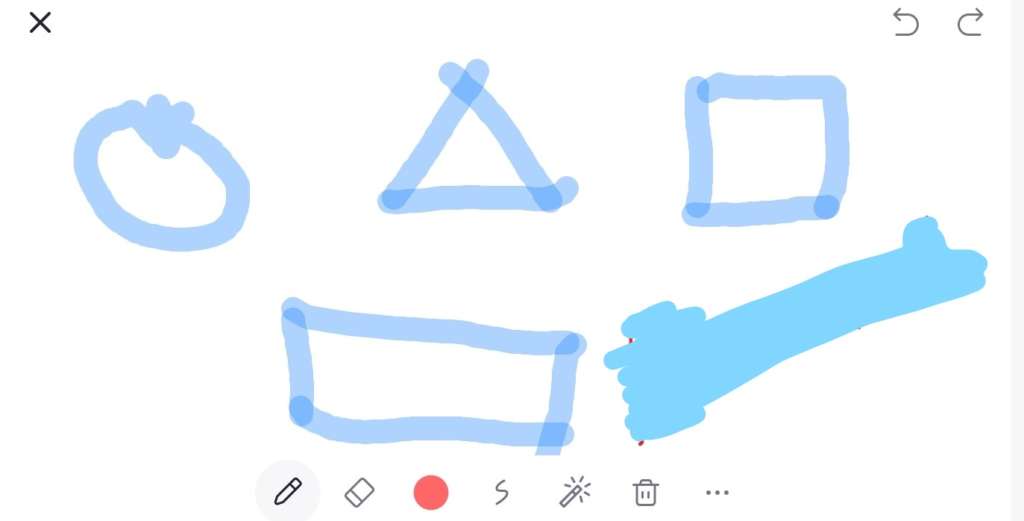
We divided the class into groups of 4–5 students and allotted them a 30 minute slot for these web conferences. Small group sizes enabled teachers to talk to all kids individually. For younger kids we realised that 3–4 should be the maximum group size, lest they start loosing interest. However, older preschoolers (4+ yrs old) could also focus in groups of 10.
For web video conferences, we used Zoom platform. Most of the teachers and students joined using their cell phones. The sketch and screen-share features are a part of their standard free offering. We also tried Hangout Meets but the call quality seemed better with Zoom
Since the mode of instruction in our classes is English, and a lot of kids don’t speak English as their first language, we faced some challenges with a couple of kids attention spans. However, teachers started naming different kids in the video to make them more relatable. Parents reached out to us to let us know that the kiddos were thrilled to hear their and their friends’ names in these videos.
With the online task tracker, video lessons and the web video calls, it seemed like the regular classes were going pretty smoothly.
In our school, we ensure that we teach kids about our culture through action. Since we live in a very diverse community, we enlist the help of our parent volunteers to teach kids about the festivals that their community celebrates. Before the lockdown was announced, some parents had volunteered for event celebrations and were scheduled to come to the school for talks during the assembly, activities during classes and performances. We worked with our parent volunteers to ask them to send video lessons for kids to us, which we shared with our students.
We shared videos and homework with parents on the school app.
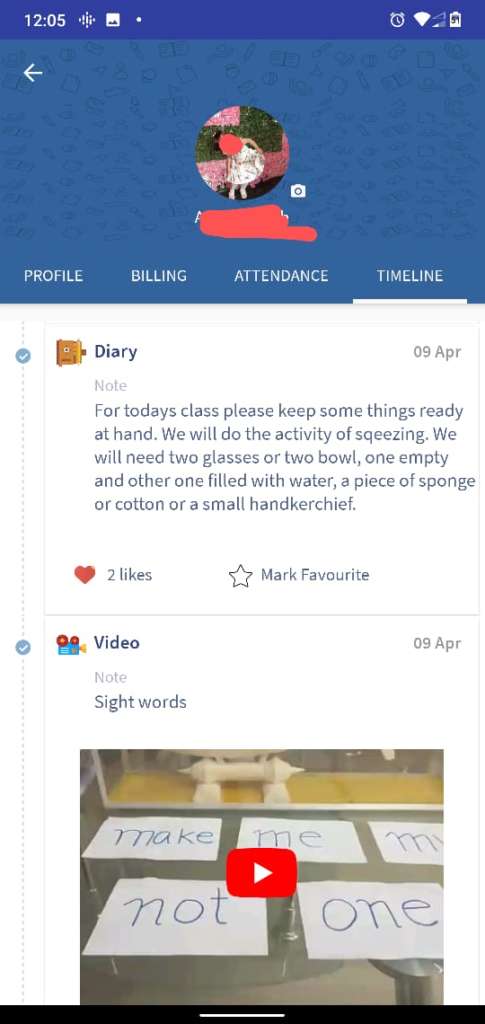
We also used the app to stay in constant touch with parents, sharing videos, links, pictures, homework etc.
While we were ensuring that the studies and student activities don’t get interrupted, we also wanted to share a list of resources that parents could find useful at home. On the 2nd Saturday of every month, we host a parents’ workshop where we share parenting tips and the curriculum for the upcoming month with the parents. This time, we used the opportunity to share these useful resources with the parents.
We had a very conventional webinar with the parents using the Zoom platform where we walked them through different free resources available on the internet which they could use to teach their kids and also to keep them entertained. (If you’d like to take a look at a recording of this webinar, please check out our Youtube channel here: https://www.youtube.com/channel/UCeLTX9S3tv33DM2XyyVd3qQ/
Note: The purpose of this post is to help other schools and parents use these ideas to support their kid’s learning at home. Please write to us if you have any questions.
